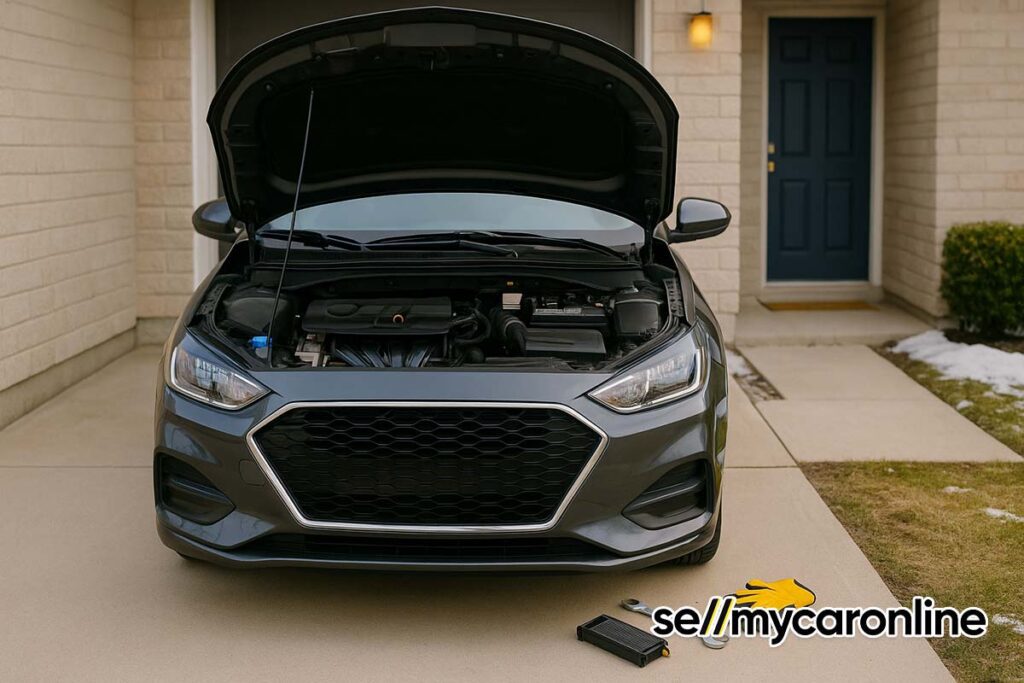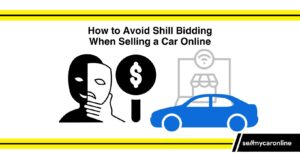Deciding whether to fix your car before selling is a common dilemma for many owners. Making repairs could potentially increase your car price, but not all fixes deliver good returns on investment. This guide helps you determine which repairs are truly worth making to maximize your selling price without wasting money on unnecessary work.
Key Highlights
- Evaluate your car’s mechanical and cosmetic condition to identify issues impacting resale value
- Weigh repair costs against the expected increase in selling price
- Minor cosmetic repairs and quick fixes often boost buyer interest for minimal cost
- Disclose all major issues honestly to build trust with potential buyers
- Use our structured checklist to decide which repairs are worth fixing before listing
Evaluating Your Car’s Condition Before Selling
Before making any repair decisions, thoroughly assess your vehicle’s current state. Mechanical issues and cosmetic imperfections both affect how prospective buyers view your car and what they’re willing to pay.
Common Problems That Affect Resale Value
| Area Inspected | Potential Issues | Impact on Value | Buyer Concerns |
|---|---|---|---|
| Engine | Oil leaks, rough idling, unusual noises, excessive smoke | Severe: Major deductions due to repair costs and reliability concerns | Fears of costly repairs and reduced engine lifespan |
| Brakes | Worn pads, squealing noises, low brake fluid, soft pedal | Moderate: Impacts safety perception and negotiation leverage | Worries about driving safety and immediate maintenance needs |
| Suspension | Clunking sounds, uneven tire wear, poor handling | Moderate: Could indicate hidden chassis or steering issues | Concerns about driving comfort and additional repair expenses |
| Transmission | Slipping gears, delayed shifting, fluid leaks | High: Replacements are expensive and reduce confidence | Apprehension about future breakdowns and high repair costs |
| Frame/Body | Rust, dents, previous collision repair, misaligned panels | Significant: Structural damage greatly lowers value | Suspicions of hidden accidents and long-term durability |
| Electrical System | Malfunctioning lights, faulty gauges, battery issues | Moderate: May signal overlooked or systemic problems | Uncertainty about reliability and unexpected repair bills |
Mechanical issues significantly impact how potential buyers value your vehicle. A persistent check engine light, unusual noises, or visible leaks immediately raise concerns about expensive auto repairs. Similarly, problematic brakes, transmission issues, or excessive rust can dramatically reduce offers, as prospective buyers factor in future repair costs and reliability concerns.
When evaluating your owned car, pay attention to issues that would concern you as a buyer. Addressing smaller mechanical problems like worn brake pads or a weak battery might be worth fixing, while major engine or transmission troubles may not justify the repair costs relative to the increased selling price.
Understanding Repair Costs and Their Impact on Selling Price
The decision to make repairs comes down to a simple question: Will the cost of repairs increase your car price by more than you spend?
Balancing Investment and Expected Return
Not all repairs deliver equal returns when selling. Consider these guidelines:
- High Return Repairs: These typically recoup 75-100% of their cost:
- Replacing worn tires
- Fixing broken glass
- Addressing minor electrical issues
- Replacing brake pads
- Completing basic service maintenance
- Low Return Repairs: These rarely recover their costs:
- Major engine rebuilds
- Transmission replacement
- Extensive rust repair
- Complete repaints
- Aftermarket upgrades
When considering making repairs, get quotes from multiple shops to understand the exact costs. Compare this to similar vehicles for sale with and without these issues to determine the likely impact on your car’s selling price.
Prospective buyers expect reasonable wear in used vehicles but are wary of signs indicating neglect or major mechanical issues. Remember that cars typically sell for 10-15% less than their listing price, so factor this into your repair decisions.
Addressing Cosmetic Imperfections: Do They Matter to Buyers?
First impressions matter significantly in car sales. Cosmetic imperfections can create negative perceptions about your vehicle’s overall condition and care.
Types of Cosmetic Imperfections That Influence Negotiations
Certain visual issues disproportionately affect how potential buyers perceive your car:
- High Impact Cosmetic Issues:
- Large dents or scratches on visible panels
- Cracked windshield or windows
- Severely faded paint
- Damaged bumpers
- Mismatched body panels
- Torn upholstery or damaged dashboard
- Lower Impact Cosmetic Issues:
- Minor scratches or door dings
- Small interior wear marks
- Slight paint fading
- Minor wheel scuffs
Cosmetic imperfections often serve as negotiation points for prospective buyers. Even when they don’t affect a vehicle’s mechanical performance, visible flaws signal to buyers that the car may not have been well-maintained. This perception can lead them to question what other issues might be lurking beneath the surface.
Interestingly, vehicles with obvious cosmetic problems typically take 10-15% longer to sell compared to similar models in good cosmetic condition, even when priced accordingly. This extended selling time has its own costs in terms of ongoing insurance, registration, and depreciation.
Assessing Whether Minor Repairs Are Worthwhile
Some quick fixes deliver exceptional returns on investment when preparing your car for sale. These targeted repairs can significantly enhance buyer perception without breaking the bank.
Quick Fixes That Can Maximize Your Sale Price
Consider these high-value minor repairs before listing your vehicle:
- Under $100 Fixes:
- Replace burnt-out bulbs and fuses
- Repair small windshield chips
- Fix broken interior components (knobs, handles)
- Replace worn wiper blades
- Professional interior cleaning
- Headlight restoration
- Touch up small paint scratches
- $100-300 Fixes:
- Basic service (oil change, fluid top-offs)
- Brake pad replacement
- Battery replacement if weak
- Minor dent repair
- Wheel repair/refinishing
- Deep interior detailing and odor removal
These relatively inexpensive fixes significantly impact prospective buyers’ first impressions. Many potential buyers overestimate repair costs, so addressing visible issues removes negotiation points that could cost you more in the final price than the repairs themselves.
Professional detailing alone (typically $150-250) can increase perceived value by $500-1,000 for most vehicles. This makes detailing one of the most cost-effective preparations before selling your car.
Navigating Major Mechanical Issues When Selling Your Car
Major mechanical problems present the biggest challenge when selling a vehicle. These issues typically require significant investment to repair, often with limited return on the selling price.
Disclosing Problems and Setting Realistic Expectations
Transparency about mechanical issues is essential for several reasons:
- Legal Protection: Failure to disclose known major mechanical issues can result in legal liability in many states
- Trust Building: Honest disclosure builds trust with potential buyers, reducing last-minute price negotiations
- Setting Expectations: Properly disclosed issues allow buyers to make informed decisions
For significant mechanical issues, consider these approaches:
- Get a Professional Assessment: Have repair quotes ready to share with prospective buyers
- Adjust Your Pricing: Reduce your asking price to account for known issues
- Target Different Buyers: Market to hobbyists or mechanics for vehicles with major mechanical problems
- Consider Trade Options: Services like Sell My Car Online often purchase vehicles with mechanical issues
When dealing with major issues like engine or transmission problems, repair costs frequently exceed the value they add to your car price. For instance, a $3,500 transmission repair on a vehicle worth $8,000 rarely increases its selling price by the full repair cost.
How to Determine if Your Car Is Worth Fixing Before Sale
Making the final decision about repairs requires weighing multiple factors specific to your situation.
Decision Checklist for Sellers
Use this practical checklist to determine if your car is worth fixing before listing:
- Calculate the Current Value
- Get a baseline value from Kelley Blue Book or similar services
- Check what similar vehicles with comparable issues sell for
- Get an Instant Cash Offer to establish a minimum value
- Estimate Repair Costs
- Get written quotes for necessary repairs
- Separate repairs into “must-fix” safety issues and optional improvements
- Determine Value After Repairs
- Research comparable vehicles in good condition
- Calculate the realistic price difference between as-is and repaired
- Consider Time Factors
- Evaluate how quickly you need to sell
- Factor in carrying costs while waiting for repairs
- Consider seasonal timing for your vehicle type
- Weigh Trade-In Options
- Compare trade value vs. private sale potential
- Consider convenience vs. maximum return
The general rule: If repair costs exceed 10% of your vehicle’s value, selling as-is often makes more financial sense. For example, spending $1,500 on repairs for a car worth $10,000 should increase its selling price by at least $1,500 to justify the investment.
Making the Final Decision
When deciding whether your car is worth fixing before selling, consider these practical guidelines:
- Always Fix:
- Safety-critical issues (brake problems, tire damage)
- Inexpensive cosmetic issues with high visual impact
- Regular maintenance items due soon (oil changes, filters)
- Usually Skip:
- Major engine or transmission repairs
- Extensive body work
- Complete system replacements
- Aging vehicle components nearing end of life
For vehicles with significant problems, services like Sell My Car Online offer competitive prices without requiring repairs, saving you time and upfront costs. Their instant cash offers provide a reliable baseline to compare against potential private sale values after making repairs.
Remember that every car and market is unique. What makes sense for a low-mileage recent model might not apply to an older vehicle. By carefully weighing repair costs against potential value increases, you can make the decision that maximizes your return when selling your car.




